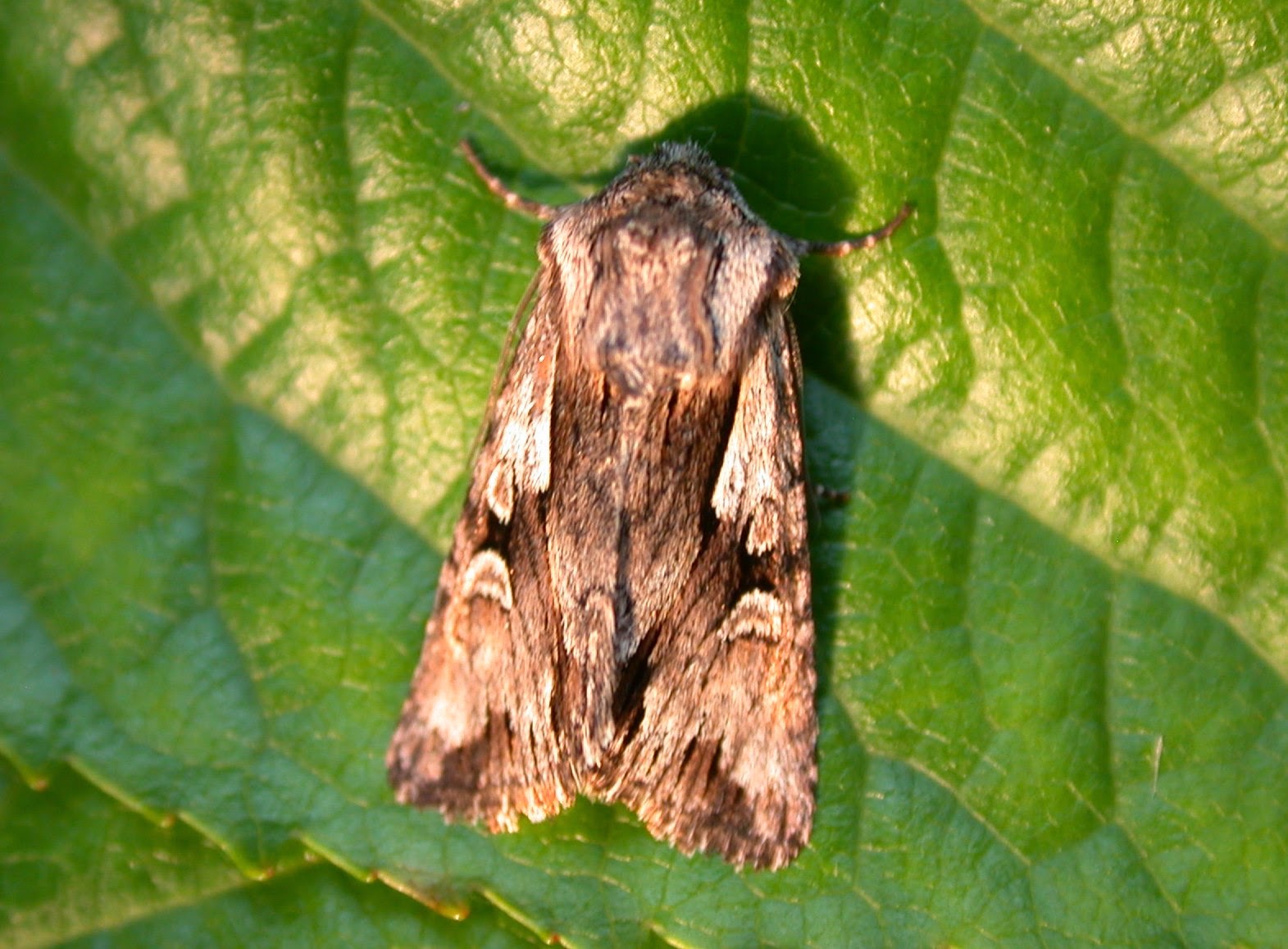 |
| Straw Belle, 30/5/14, Dover/Folkestone area, Kent |
Friday, 30 May 2014
Straw Belle (Aspitates gilvaria)
This male Straw Belle was a surprise reward for the Bald Birder whilst taking his five-year old son on a cliff top walk in the Dover area.
Wednesday, 28 May 2014
Black-veined Moth (Siona lineata)
Black-Veined Moth - A protected species, restricted to a handful of locations in south-east Kent, it was formerly also found in some other southern counties.
It flies during the day, especially in sunshine, and frequents rough downland, pastures and similar grassy places. (UKMoths).
It flies during the day, especially in sunshine, and frequents rough downland, pastures and similar grassy places. (UKMoths).
 |
| Black-veined White, 9/6/10, East Kent, John van der Dol |
 |
| Black-veined Moth, East Kent, James Hunter |
Tuesday, 27 May 2014
Muslin Moth (Diaphora mendica)
A common species throughout much of Kent - males are most frequently seen at night, attracted to light. Females are day fliers.
The gyandromorph caught by John Beugg at Sandwich BBOT in May 2014 is a stunning beast!
The gyandromorph caught by John Beugg at Sandwich BBOT in May 2014 is a stunning beast!
 |
| Muslin Moth (males), 24/5/10, Pembury, Josh Jenkins-Shaw |
 |
| Muslin Moth (female), 5/5/14, Dungeness Lighthouse, Bald Birder |
 |
| Muslin Moth (Gyandromorph), 9/5/14, Sandwich Bay BOT, John van der Dol |
Thursday, 22 May 2014
Pale-shouldered Cloud - Actinotia hyperici
This Pale-shouldered Cloud, a rare continental noctuid, was caught by Ian Roberts in Hythe (representing the 4th record in the Folkestone area). More information via the Folkestone & Hythe Birds website.
The first British record was caught at Dungeness, Kent,in August 1996.
The first British record was caught at Dungeness, Kent,in August 1996.
 |
| Pale-shouldered Cloud, 22/5/14, Hythe, Ian Roberts |
Wednesday, 21 May 2014
Cypress Carpet - Thera cupressata
This Cypress Carpet was a welcome find for the Bald Birder on his patio this morning.
The first Kent record was as recently as 21/10/99 - since which it has spread. With the common Leylandii conifer being planted across the county, this moth is set to become more widespread.
The first Kent record was as recently as 21/10/99 - since which it has spread. With the common Leylandii conifer being planted across the county, this moth is set to become more widespread.
 |
| Cypress Carpet, 20/5/14, Larkfield, The Bald Birder |
 |
| Cypress Carpet, 20/5/14, Larkfield, The Bald Birder |
Sunday, 18 May 2014
Dark Spectacle - Abrostola triplasia
This Dark Spectacle was trapped at Cliffe Marshes RSPB by the Bald Birder on 18/5/14. Luckily it was trapped with a Spectacle, allowing some interest/direct comparisons.
Reportedly widespread in Kent.
UK Moths: "Occurring in suburban habitats, waste ground and woodland margins, it flies in June and July, sometimes with a second generation in the autumn."
Reportedly widespread in Kent.
UK Moths: "Occurring in suburban habitats, waste ground and woodland margins, it flies in June and July, sometimes with a second generation in the autumn."
 |
| Dark Spectacle - Cliffe Marshes, 18/5/14, Bald Birder |
 |
| Dark Spectacle (left) with Spectacle (right) - Cliffe Marshes |
Saturday, 17 May 2014
Grass Emerald - Pseudoterpna pruinata
Thursday, 15 May 2014
Toadflax Brocade (Calophasia lunula)
From UKmoths: "As a resident species, this moth is restricted to the south-east and central southern coasts of England, where it frequents mainly shingle beaches. It is a relatively recent colonist, arriving around 1950 and quickly gaining a foothold, but appears to be now in decline again. It has two generations, sometimes overlapping, from May to August, and migrants sometimes appear away from the main stronghold in July and August"
Always unexpected, but very welcome, catch in the trap!
Always unexpected, but very welcome, catch in the trap!
 |
| Toadflax Brocade, 15/5/14, Hythe, Ian Roberts |
 |
| Toadflax Brocade, 23/5/10, Paddock Wood, Marcus Lawson |
Wednesday, 14 May 2014
Four-spotted - Tyta luctuosa
This Four-spotted was observed at Hythe Roughs by Ian Roberts.
A species in decline throughout much of its previous range in the UK, Four-spotted is managing to maintain a foothold in the Brecks, New Forest a nd a few other locations in the UK, south of a line from teh Humber to the Severn.
A species in decline throughout much of its previous range in the UK, Four-spotted is managing to maintain a foothold in the Brecks, New Forest a nd a few other locations in the UK, south of a line from teh Humber to the Severn.
 |
| Four-spotted, 14/5/14, Hythe Roughs, Ian Roberts |
Tuesday, 13 May 2014
Dew Moth - Setina irrorella
Subscribe to:
Posts (Atom)



